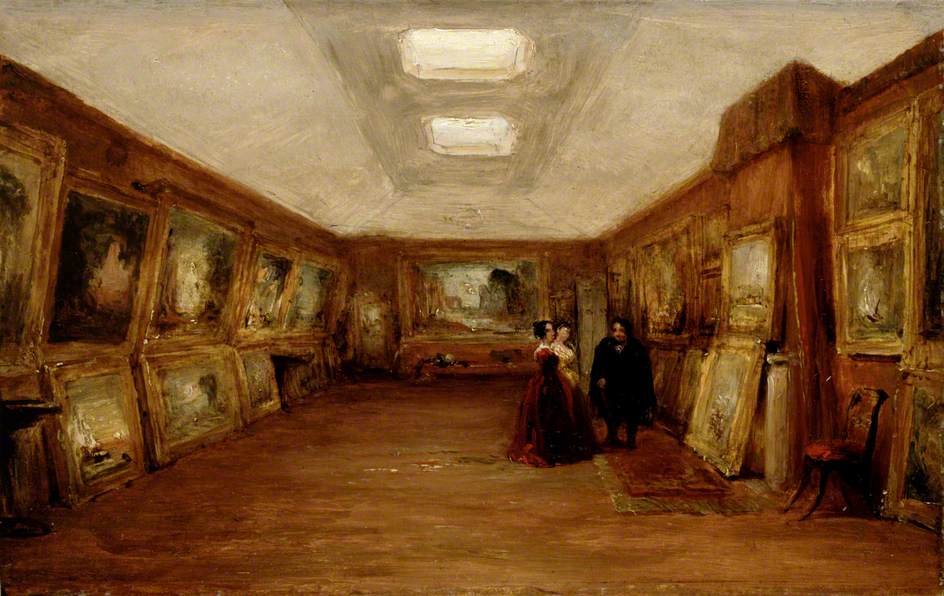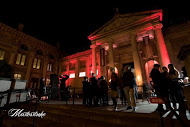
(c) The Ashmolean Museum of Art and Archaeology; Supplied by The Public Catalogue Foundation
Interior of Turner’s Gallery: the Artist showing his Works – George Jones (1852) by Anna Zanetti
As empty-looking as it may seem, I’ve always found this painting incredibly rich in meanings. It’s entitled Interior of Turner’s Gallery: the Artist showing his works, and was painted by George Jones in 1852. It reproduces the Gallery on Queen Anne Street (West End of London) where Turner kept his unsold works. The room has red walls, a wooden floor, and central skylight coming from the white ceiling. On the walls, a number of paintings are hung, opening onto the gallery like colourful windows. We can even recognise some of Turner’s actual works, such as Dido building Carthage (1815), at the centre of the back wall.
There are two main reasons why I find this picture fascinating. First of all, it acts as a visual document for Turner’s real gallery: together with another oil painting by Jones, this is the only visual record we have. Interestingly, Jones painted it after Turner’s death, from memory, because Turner didn’t want anyone to paint his gallery. In spite of the reliance on visual memory only, Jones managed to capture the atmosphere of the gallery successfully. A letter by Lady Trevelyan, one of Turner’s friends and fans, reads: ‘Among bits of old furniture thick with dust like a place that has been forsaken for years, were those brilliant pictures all glowing with sunshine and colour…’. Indeed, this looks very much like what Jones has painted.
Not only does this painting act as a historical record, but it also bears a metapictorial significance. The Greek preposition ‘meta’ means (among other things) ‘beyond’. With his work, Jones takes us beyond art and makes us reflect on how art is seen and experienced. The characters of the painting, just like us, are looking at paintings themselves. In this way Jones draws our attention to our role as viewers.
In his metapictorial play, Jones also invites us to re-think about Tuner’s works. When we admire them at Tate Britain, they look spectacular for sure, but also relatively realistic. They appear real depictions of real places, and we are tempted to congratulate the artist on his lifelike representations. The reality is that in many cases Turner would paint completely invented scenes – and Jones knew it. According to an anecdote, on the frame of The Bay of Baiae, with Apollo and the Sibyl (1820), painted by Turner after his first trip to Italy, Jones wrote ‘Splendide Mendax’ (Gloriously False): he knew that the work was largely the artist’s invention rather than topographically exact. Turner never removed the inscription, acknowledging that the truth of his art lay not so much in prosaic reality as ‘in his ability to use invention as a means towards discovering deeper understandings of the world’ (Sam Smiles, J.M.W. Turner, 2000). Much like the Latin note on Turner’s work, Interior of Turner’s Gallery confronts us with the relationship between his art and reality. Having several of Turner’s works all in one picture draws our attention to his status as an artist and his visionary creativity, which often went beyond mere reality.
-Anna Zanetti
Object Details:
George Jones (1786 – 1869)
Interior of Turner’s Gallery: the Artist showing his Works
A241; oil on millboard; 14 x 23 cm
Presented by Mrs George Jones, the artist’s widow.; WA1881.348


